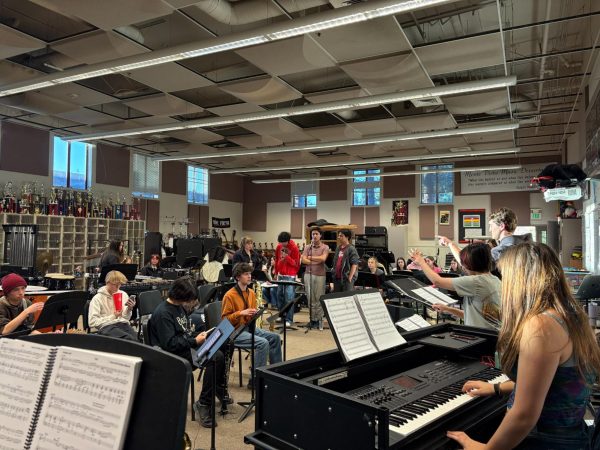The Rise of Depop Girlies

Photo: Courtesy Buffalo Exchange
Thrift stores are establishments that sell donated clothes for lower prices in order to become accessible to individuals with lower incomes. That being said, many have made a business for themselves by taking the clothes they had bought for less and selling it online for three times its original price.
Thrifting is an ethical and cheap alternative to the online shopping many teenagers partake in. However, this once inexpensive option seems to be increasing its pricing.
Thrifting is now accessible through our devices with apps such as Depop and ThredUp. These apps allow people to resell second-hand clothing directly to buyers. Since Depop is an online thrift store, it is assumed that the clothes would be cheap. Unfortunately, this is not the case.
A simple white skirt that was originally $15, worn, and then donated, is now being resold for $45 tagged as “#90s,” “#y2k” and “#vintage.” The prices for used articles of clothing are outrageously inflated. Resellers charge way more than is necessarily in order to make a large profit.
When “Depop girlies” purchase cheap clothes from their local thrift store in large amounts and then proceed to resell them on Depop for three times the price, the financial reasons for why people thrift is completely diminished.
Nevertheless, there is an upside for Depop resellers. Sifting through thrift stores does take time and skill. “Depop girlies” pick and choose certain pieces that are perfect for their target audience. If you are looking for a specific skirt or bag, then it’s easy to go to the Depop search bar and look for what you want.
A portion of the clothes being resold is also one-of-a-kind and authentically “vintage,” allowing buyers to have unique pieces that were made decades ago. But sadly a lot of the items being resold are from fast fashion brands such as Shein or Romwe. These clothes that were hastily bought in order to not miss a trend end up being donated.
Caitlin O’Melia, a Monte Vista senior, raises another issue regarding the prices.
“The increase in reselling thrifted items raises the price for low-income people who may now be less able to afford second hand clothes,” O’Melia said. “That being said, many thrift stores still have a surplus of clothing.”
Although there are negative issues surrounding reselling, it is still a form of thrifting. Large amounts of clothes are dumped into landfills daily, but those who thrift are helping to eliminate this excessive waste.
Depop has made thrifting more accessible yet more expensive than ever. But after all, if someone wants to buy that $45 skirt, then that is their choice.

Emma Hedican is a junior at Monte Vista. She hopes to contribute to the supportive environment in her...






